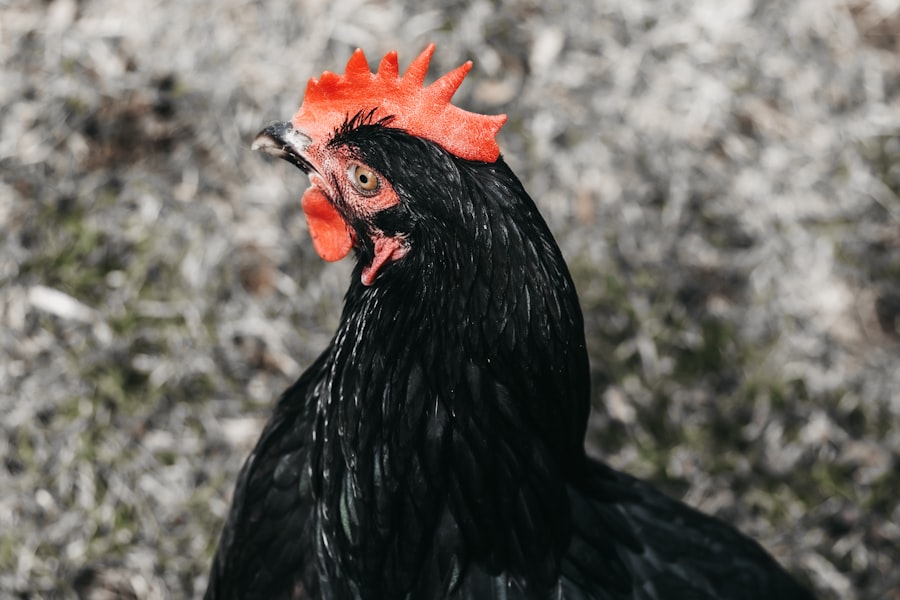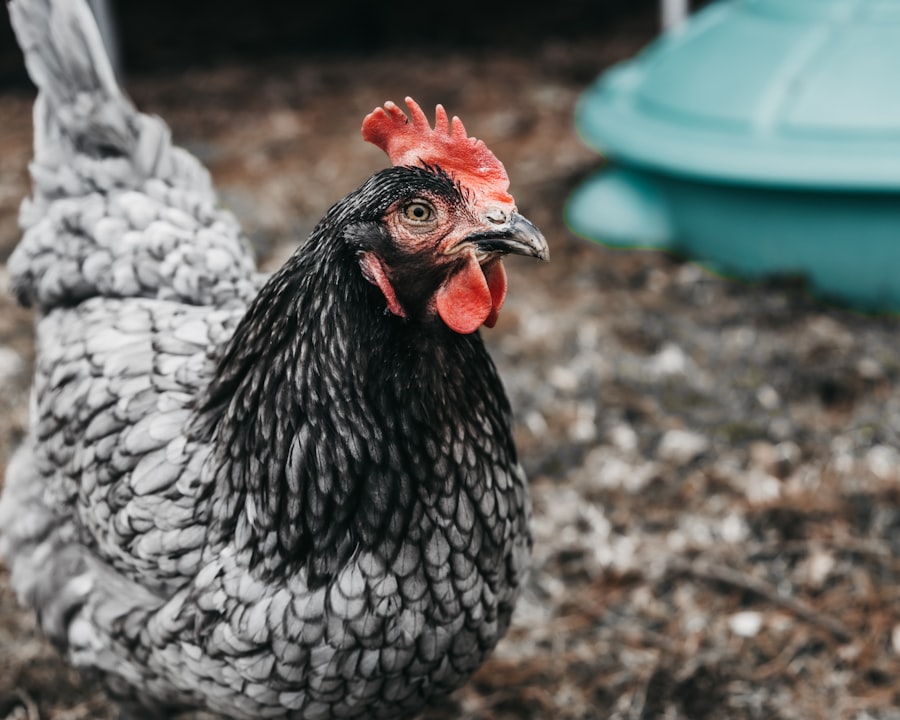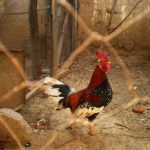Weasels are small, carnivorous mammals belonging to the Mustelidae family. They possess slender bodies, short legs, and long, flexible necks. These animals have acute senses of smell and hearing, which contribute to their hunting prowess.
Weasels are primarily nocturnal, being most active during nighttime hours. Their agility and ability to squeeze through small openings make them particularly adept at accessing chicken coops and other confined spaces. As opportunistic predators, weasels prey on a variety of animals, including chickens, rabbits, and rodents.
They are known to kill more prey than they can immediately consume, often storing excess food for later. Weasels employ cunning and stealthy hunting techniques, making them a significant threat to poultry and other small livestock. To effectively protect chicken coops from weasel attacks, it is crucial to understand these predators’ behavior and habits.
By gaining insight into their hunting patterns and preferences, targeted strategies can be implemented to deter weasels from targeting chickens.
Table of Contents
- 1 Securing the Chicken Coop
- 2 Installing Fencing and Barriers
- 3 Using Predator Deterrents
- 4 Keeping the Surrounding Area Clear
- 5 Monitoring and Surveillance
- 6 Seeking Professional Help
- 7 FAQs
- 7.1 What are weasels and why are they a threat to chickens?
- 7.2 How can I identify if weasels are targeting my chickens?
- 7.3 What are some effective methods for keeping weasels out of my chicken coop?
- 7.4 Are there any natural predators of weasels that can help keep them away from my chickens?
- 7.5 What should I do if I suspect weasels are targeting my chickens?
Key Takeaways
- Weasels are small, agile predators known for their ability to squeeze through small openings and tunnels.
- Chicken coops should be secured with sturdy materials and hardware cloth to prevent weasel entry.
- Fencing should be buried at least 12 inches underground and extend at least 3 feet above ground to deter weasels.
- Predator deterrents such as motion-activated lights and sound devices can help keep weasels away from the coop.
- Keeping the area around the coop clear of brush and debris can reduce hiding spots for weasels.
- Regular monitoring and surveillance of the coop can help identify and address any potential weasel threats.
- Seeking professional help from wildlife experts may be necessary for persistent weasel problems.
Securing the Chicken Coop
Inspecting the Coop for Entry Points
Start by inspecting the coop for any potential entry points that weasels could exploit. Weasels are adept at squeezing through small openings, so it is crucial to seal any gaps or holes in the coop’s structure.
Securing Openings and Doors
Use hardware cloth or wire mesh with small openings to cover windows, vents, and other openings to prevent weasels from gaining access. Additionally, consider reinforcing the coop’s doors with sturdy locks or latches to prevent weasels from forcing their way inside. It is also important to keep the area around the coop free from clutter and debris that could provide hiding spots for weasels.
Installing Predator-Proof Flooring
Another effective strategy for securing the chicken coop is to install predator-proof flooring. This can be achieved by burying wire mesh or hardware cloth around the perimeter of the coop to prevent weasels from digging underneath and gaining access to the chickens. By implementing these measures, you can create a secure and fortified environment that will deter weasels from targeting your poultry.
Installing Fencing and Barriers

Installing fencing and barriers around the chicken coop is an effective way to prevent weasel attacks. Choose a sturdy fencing material such as wire mesh or hardware cloth with small openings to create a secure enclosure for your poultry. Ensure that the fencing extends underground to prevent weasels from digging underneath and gaining access to the coop.
In addition to traditional fencing, consider installing an electric fence as an added layer of protection against weasels. Electric fences deliver a mild shock upon contact, deterring predators from attempting to breach the enclosure. When installing an electric fence, be sure to follow safety guidelines and regulations to ensure the well-being of both your chickens and local wildlife.
Another option for deterring weasels is to install predator-proof barriers such as PVC piping or metal flashing around the perimeter of the coop. These barriers create an additional obstacle for weasels, making it more difficult for them to access the chickens. By combining fencing with predator-proof barriers, you can create a formidable defense against weasel attacks.
Installing fencing and barriers around the chicken coop is an effective way to prevent weasel attacks. Choose a sturdy fencing material such as wire mesh or hardware cloth with small openings to create a secure enclosure for your poultry. Ensure that the fencing extends underground to prevent weasels from digging underneath and gaining access to the coop.
In addition to traditional fencing, consider installing an electric fence as an added layer of protection against weasels. Electric fences deliver a mild shock upon contact, deterring predators from attempting to breach the enclosure. When installing an electric fence, be sure to follow safety guidelines and regulations to ensure the well-being of both your chickens and local wildlife.
Another option for deterring weasels is to install predator-proof barriers such as PVC piping or metal flashing around the perimeter of the coop. These barriers create an additional obstacle for weasels, making it more difficult for them to access the chickens. By combining fencing with predator-proof barriers, you can create a formidable defense against weasel attacks.
Using Predator Deterrents
In addition to physical barriers, using predator deterrents can help discourage weasels from targeting your chicken coop. One effective deterrent is motion-activated lights or sound devices that startle and deter predators when they approach the coop. These devices can be strategically placed around the perimeter of the coop to create a hostile environment for weasels.
Another option is to use scent-based deterrents such as predator urine or ammonia-soaked rags placed near the coop. Weasels have a keen sense of smell, and these strong odors can signal danger and discourage them from approaching the area. Additionally, consider using reflective tape or shiny objects near the coop to create visual disturbances that can deter weasels.
For a natural deterrent, consider introducing predator species such as barn owls or hawks in the area surrounding your chicken coop. These natural predators can help keep weasel populations in check by preying on them and creating a hostile environment for them. In addition to physical barriers, using predator deterrents can help discourage weasels from targeting your chicken coop.
One effective deterrent is motion-activated lights or sound devices that startle and deter predators when they approach the coop. These devices can be strategically placed around the perimeter of the coop to create a hostile environment for weasels. Another option is to use scent-based deterrents such as predator urine or ammonia-soaked rags placed near the coop.
Weasels have a keen sense of smell, and these strong odors can signal danger and discourage them from approaching the area. Additionally, consider using reflective tape or shiny objects near the coop to create visual disturbances that can deter weasels. For a natural deterrent, consider introducing predator species such as barn owls or hawks in the area surrounding your chicken coop.
These natural predators can help keep weasel populations in check by preying on them and creating a hostile environment for them.
Keeping the Surrounding Area Clear
Maintaining a clear and well-maintained area around the chicken coop is essential for minimizing potential hiding spots for weasels. Keep grass and vegetation trimmed near the coop to reduce cover for predators. Additionally, remove any debris or clutter that could provide hiding spots for weasels near the coop.
Regularly inspect the surrounding area for signs of weasel activity such as tracks or droppings. By staying vigilant and proactive in maintaining a clear environment, you can reduce the likelihood of weasel infestations near your chicken coop. In addition to clearing vegetation and debris, consider implementing natural landscaping features such as gravel or rocks around the perimeter of the coop.
These features create an inhospitable environment for weasels by reducing potential hiding spots and creating obstacles for them. Maintaining a clear and well-maintained area around the chicken coop is essential for minimizing potential hiding spots for weasels. Keep grass and vegetation trimmed near the coop to reduce cover for predators.
Additionally, remove any debris or clutter that could provide hiding spots for weasels near the coop. Regularly inspect the surrounding area for signs of weasel activity such as tracks or droppings. By staying vigilant and proactive in maintaining a clear environment, you can reduce the likelihood of weasel infestations near your chicken coop.
In addition to clearing vegetation and debris, consider implementing natural landscaping features such as gravel or rocks around the perimeter of the coop. These features create an inhospitable environment for weasels by reducing potential hiding spots and creating obstacles for them.
Monitoring and Surveillance

Install Security Cameras
Consider installing security cameras around the perimeter of the coop to monitor any potential threats from weasels or other predators. In addition to security cameras, consider using motion-activated wildlife cameras near the coop to capture images of any nocturnal visitors such as weasels.
Monitor and Inspect
Regularly inspecting the chicken coop for signs of damage or attempted entry by weasels is also important in maintaining a secure environment for your poultry. These cameras can provide valuable insight into patterns of predator activity and help you identify potential vulnerabilities in your defenses.
Stay Vigilant and Proactive
By staying vigilant and proactive in monitoring your coop, you can identify potential threats early on and take appropriate action to protect your flock. Regular monitoring and surveillance of your chicken coop can help detect signs of weasel activity early on and allow you to take proactive measures to protect your flock.
Seeking Professional Help
If despite your best efforts, you continue to experience issues with weasel attacks on your chicken coop, it may be time to seek professional help. Contacting a wildlife control expert or pest management professional can provide valuable insight into effective strategies for deterring weasels from targeting your poultry. A professional can conduct a thorough assessment of your property and recommend targeted solutions based on your specific situation.
They may also be able to implement advanced deterrent techniques such as live traps or exclusion methods that can effectively address persistent weasel infestations. Additionally, seeking guidance from local agricultural extension services or poultry organizations can provide access to resources and expertise in managing predator threats to poultry operations. By leveraging professional assistance and expertise, you can develop a comprehensive strategy for protecting your chickens from weasel attacks.
If despite your best efforts, you continue to experience issues with weasel attacks on your chicken coop, it may be time to seek professional help. Contacting a wildlife control expert or pest management professional can provide valuable insight into effective strategies for deterring weasels from targeting your poultry. A professional can conduct a thorough assessment of your property and recommend targeted solutions based on your specific situation.
They may also be able to implement advanced deterrent techniques such as live traps or exclusion methods that can effectively address persistent weasel infestations. Additionally, seeking guidance from local agricultural extension services or poultry organizations can provide access to resources and expertise in managing predator threats to poultry operations. By leveraging professional assistance and expertise, you can develop a comprehensive strategy for protecting your chickens from weasel attacks.
In conclusion, protecting your chicken coop from weasel attacks requires a multi-faceted approach that includes understanding their behavior, securing the coop with physical barriers, using deterrents, maintaining a clear surrounding area, monitoring for signs of activity, and seeking professional help if needed. By implementing these strategies in combination with one another, you can create a fortified environment that effectively deters weasels from targeting your poultry. With vigilance and proactive measures in place, you can safeguard your flock from potential threats posed by these cunning predators.
If you’re looking for ways to keep weasels out of your chickens, you may also be interested in learning about how many eggs geese lay. Check out this article to find out more about geese breeding and egg production.
FAQs
What are weasels and why are they a threat to chickens?
Weasels are small, carnivorous mammals that are known for their ability to hunt and kill chickens. They are a threat to chickens because they can easily fit through small openings in chicken coops and are skilled at preying on poultry.
How can I identify if weasels are targeting my chickens?
Signs that weasels are targeting your chickens include finding dead or missing chickens with puncture wounds to the neck or head, as well as evidence of weasel tracks or droppings near the coop.
What are some effective methods for keeping weasels out of my chicken coop?
Some effective methods for keeping weasels out of your chicken coop include securing all openings with hardware cloth, burying the wire at least 12 inches deep to prevent digging, and using motion-activated lights or sound devices to deter them.
Are there any natural predators of weasels that can help keep them away from my chickens?
Some natural predators of weasels include larger carnivorous mammals such as foxes, coyotes, and birds of prey. Encouraging the presence of these predators in the area can help keep weasels away from your chickens.
What should I do if I suspect weasels are targeting my chickens?
If you suspect weasels are targeting your chickens, it is important to take immediate action to secure your coop and protect your poultry. This may involve implementing the aforementioned methods for keeping weasels out, as well as setting traps or seeking assistance from wildlife control professionals.
Meet Walter, the feathered-friend fanatic of Florida! Nestled in the sunshine state, Walter struts through life with his feathered companions, clucking his way to happiness. With a coop that’s fancier than a five-star hotel, he’s the Don Juan of the chicken world. When he’s not teaching his hens to do the cha-cha, you’ll find him in a heated debate with his prized rooster, Sir Clucks-a-Lot. Walter’s poultry passion is no yolk; he’s the sunny-side-up guy you never knew you needed in your flock of friends!







